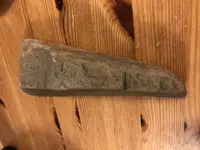Loved your observation re. climate & geography, Josh. But not this one:
Would those be recognizable tools in the US, probably not. The picture they posted isn't the greatest, I've seen some other examples that show a lot more recognizable bladelet work and edge wear that most of us would recognize (edges that look like thumb scrapers.)
There's some fairly recent conceptual catch-up work to be done there.
Doc Gramly's made two recent papers publicly available @ Researchgate.net (they're posted under his name), surveying Cumberland culture flake tools and blade tools. They are even cruder than the Tibetan ones but identifiable by Cumberland excavated context and edge wear analysis.
A bigger picture point he makes relates to his belief that Clovis evolved here from El Jobo roots introduced from the south (which you're intimately acquainted with, I know) rather than from transatlantic migration. To wit, European blade tools, from the Aurignacian on, were made as tool blanks for modification but Cumberland-Clovis tradition made them to be used as-is, and discarded for new ones in lithic-rich environments. (Less effort to make a new one).
Collectors knew long ago that the amount of edge curation (which people take gto be the gold standard of tool-vs.-not-tool evaluation) on these was proportionate to the distance from their lithic sources. (Nobody's going to go 300 miles back to winter quarters at the favorite lithic exposure for new ones when the ones they had with them could be touched up/re-cycled). (These consequently display rubbing on their arises from jostling during transportation in bags).
Even Hopewell microblades here in the east are not frequently retouched -- when edges are chipped they're more easily attributed to use wear).
FWIW




